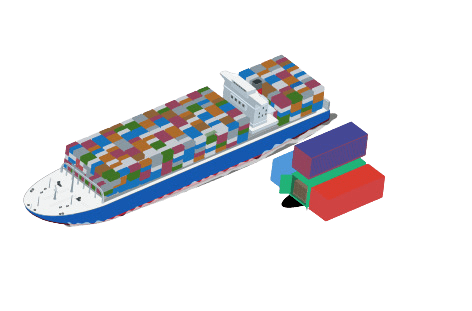Export packaging plays a crucial role in international trade, being essential to ensure the integrity of products during transportation and provide a positive customer experience.
In this article, we will cover everything you need to know about export packaging, including the available types, their strategic importance, and the main rules and requirements related to them.
Keep reading to enhance your knowledge about this fundamental topic in the realm of logistics and international trade.
What Are Export Packagings?
Export packagings are structures designed to store and protect products during transportation and international movement. Their purpose is to ensure that the products reach their final destination with their original characteristics preserved, guaranteeing the quality and safety of the product throughout the entire logistical journey.
Types of Export Packaging
There are different types of export packagings, each suitable for different logistical needs. Below, we present the main types used:
- Shelf Packaging: This packaging is intended for displaying the product at the point of sale in the destination country. It offers simple protection and includes essential information to attract consumers, such as brand, model, expiration date, among others.
- Transport Packaging: Intended for the movement of products, this packaging is more robust and reinforced to withstand impacts and adverse conditions during international transportation.
- Unitization Packaging: Involves grouping several goods into a single customized packaging, ensuring greater security and facilitating the process of transportation and temporary storage.
- Palletization Packaging: Uses a wooden platform or pallet to accommodate secondary and tertiary packaging. This configuration allows for the movement and transportation of loads using forklifts.
- Containerization: Containers are widely used for the storage and transportation of various products on a large scale. They offer high strength and protection, making them ideal for large-volume exports.
- Pre-Lashing: Involves wrapping the load with nets, straps, or handles suitable for lifting, providing greater stability during transportation.
The Importance of Export Packaging
Export packagings have strategic importance in international trade operations. Their main function is to ensure that the products reach the final destination in perfect condition, avoiding damage and ensuring customer satisfaction.
Some of the main reasons that make packaging crucial in the export process are:
- Preservation of Product Integrity: Proper packaging protects products against damage, moisture, shocks, and adverse weather conditions during international transportation.
- Facilitation of the Logistic Process: Well-designed packaging allows for better use of available space in transportation, optimizing loading and reducing logistical costs.
- Image and Competitiveness: Attractive and well-designed packaging can add value to the brand and the product, increasing its competitiveness in the international market.
Compliance with Standards and Regulations: Export packagings must follow specific rules of each country to ensure safety and compliance with local legislation.
Rules for the Transportation of Export Packaging
Packagings intended for international trade must comply with the specific regulations of each country. Some of the main rules and requirements related to the transportation of export packagings are:
- Printing of Information in the Language of the Destination Country: All information on the packaging must be printed in the language of the destination country.
- Certification of Forest Resources: Packagings made from forest resources must be certified by the National Institute of Metrology, Quality, and Technology (Inmetro).
- Expression “For Export Only”: Export packagings must bear the expression “For Export Only,” indicating that they are exclusively for export and should not be sold in the domestic market.
- Compliance with Technical and Environmental Standards: Packagings must comply with the standards of the Brazilian Association of Technical Standards (ABNT), National Health Surveillance Agency (Anvisa), and National Environment Council (Conama).
It is essential for companies to conduct a prior consultation with Inmetro to ensure that their packagings meet all the requirements and regulations specific to each destination country.
Conclusion
Export packagings are crucial to ensure the integrity of products during international transportation and provide a positive customer experience.
Choosing the appropriate type of packaging and ensuring compliance with the specific regulations of each country are essential steps for the success of international trade operations.
Investing in quality packagings and following proper transportation rules will help your company gain competitiveness in the global market, strengthen the brand image, and ensure customer satisfaction worldwide. Logistics and international trade are intrinsically linked to the quality and efficiency of the packagings used, making them a key element in the success of international operations.
What is Cheap2Ship?
Get to know Cheap2Ship, a technology company specialized in logistics and international trade. Through our advanced platform for freight management and quoting, medium and large companies have experienced a significant increase in operational efficiency and a reduction in logistical costs.
Our commitment is to provide greater transparency in the costs related to current freight providers, such as shipowners, cargo agents, and carriers. With this, our clients can make more informed and strategic decisions for their businesses.
To learn more about our innovative solutions, visit our website and follow us on social media. There, you will find relevant content about international trade, logistics, and supply chain. We are ready to drive the success of your company in the global market. Join us and discover how we can make a difference for your business.

